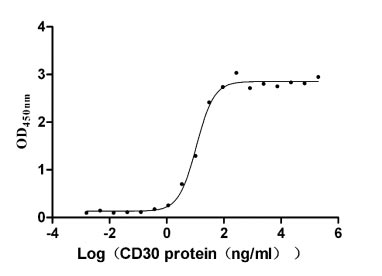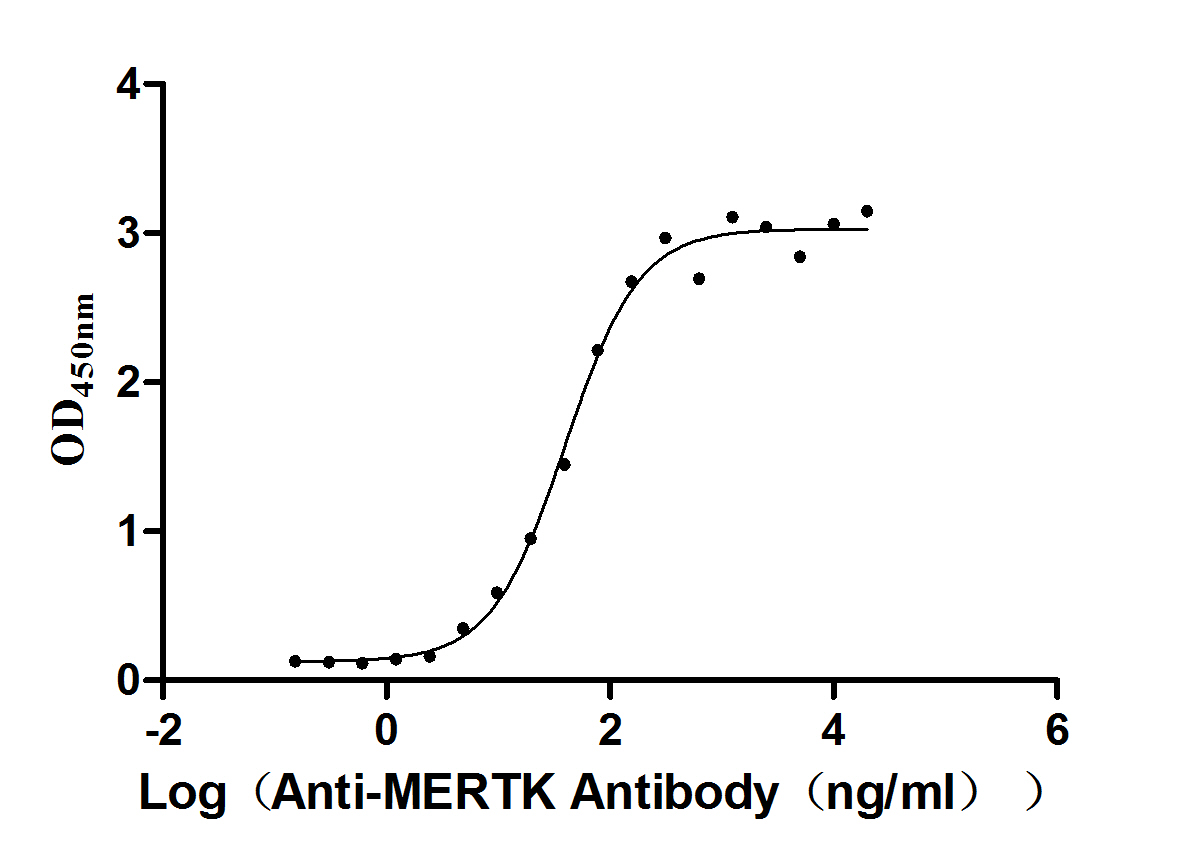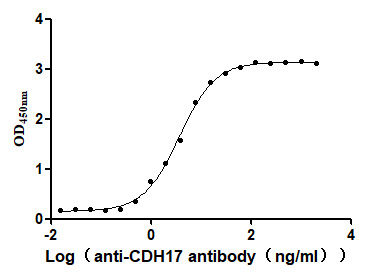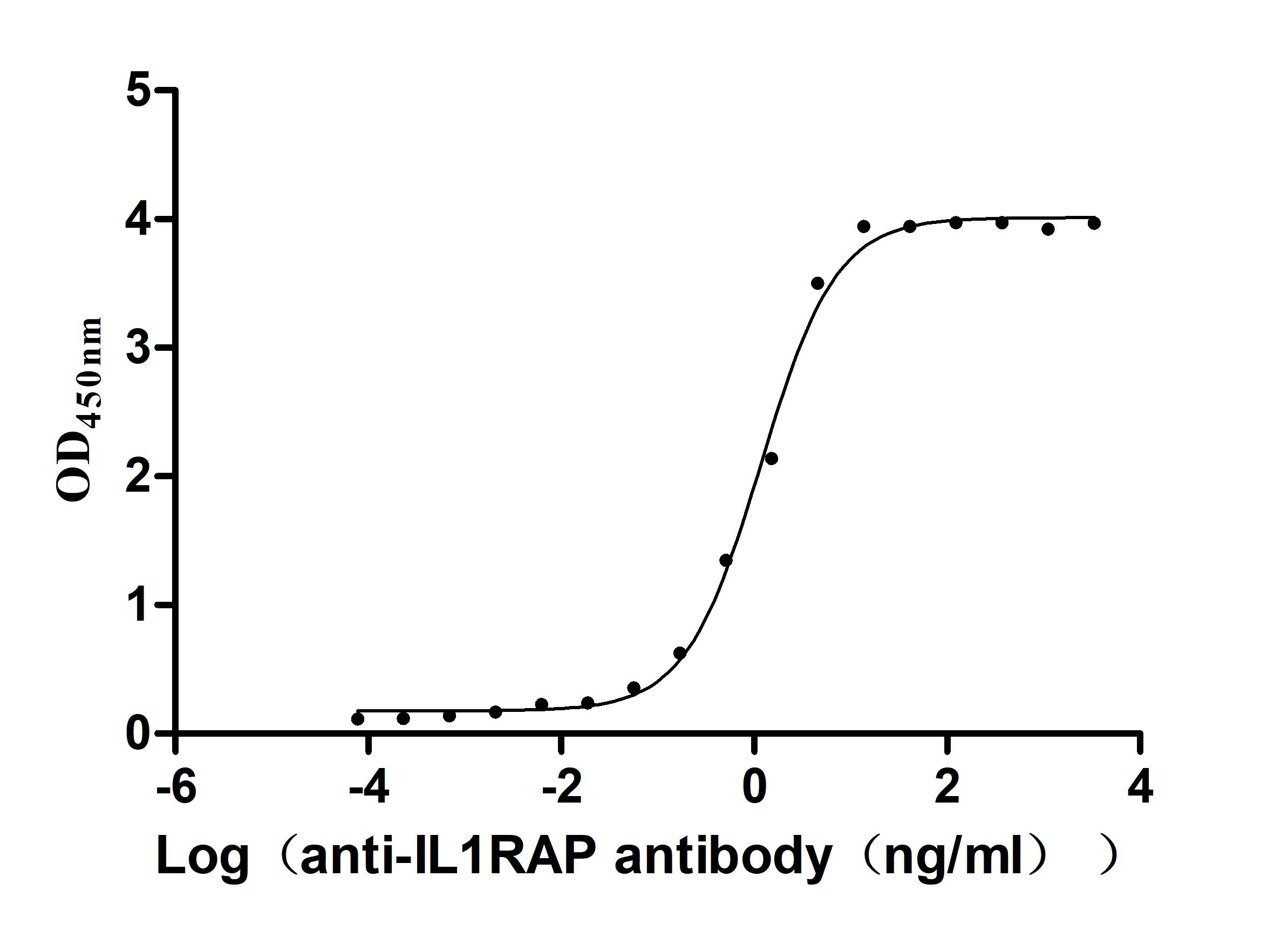Recombinant Human Latent-transforming growth factor beta-binding protein 4 (LTBP4), partial
-
中文名稱:人LTBP4重組蛋白
-
貨號(hào):CSB-YP850788HU
-
規(guī)格:
-
來源:Yeast
-
其他:
-
中文名稱:人LTBP4重組蛋白
-
貨號(hào):CSB-EP850788HU
-
規(guī)格:
-
來源:E.coli
-
其他:
-
中文名稱:人LTBP4重組蛋白
-
貨號(hào):CSB-EP850788HU-B
-
規(guī)格:
-
來源:E.coli
-
共軛:Avi-tag Biotinylated
E. coli biotin ligase (BirA) is highly specific in covalently attaching biotin to the 15 amino acid AviTag peptide. This recombinant protein was biotinylated in vivo by AviTag-BirA technology, which method is BriA catalyzes amide linkage between the biotin and the specific lysine of the AviTag.
-
其他:
-
中文名稱:人LTBP4重組蛋白
-
貨號(hào):CSB-BP850788HU
-
規(guī)格:
-
來源:Baculovirus
-
其他:
-
中文名稱:人LTBP4重組蛋白
-
貨號(hào):CSB-MP850788HU
-
規(guī)格:
-
來源:Mammalian cell
-
其他:
產(chǎn)品詳情
-
純度:>85% (SDS-PAGE)
-
基因名:LTBP4
-
Uniprot No.:
-
別名:latent transforming growth factor beta binding protein 4; latent transforming growth factor beta binding protein 4L; Latent-transforming growth factor beta-binding protein 4; LTBP 4; LTBP-4; LTBP4; LTBP4_HUMAN; LTBP4L; LTBP4S
-
種屬:Homo sapiens (Human)
-
蛋白長(zhǎng)度:Partial
-
蛋白標(biāo)簽:Tag?type?will?be?determined?during?the?manufacturing?process.
The tag type will be determined during production process. If you have specified tag type, please tell us and we will develop the specified tag preferentially. -
產(chǎn)品提供形式:Lyophilized powder
Note: We will preferentially ship the format that we have in stock, however, if you have any special requirement for the format, please remark your requirement when placing the order, we will prepare according to your demand. -
復(fù)溶:We recommend that this vial be briefly centrifuged prior to opening to bring the contents to the bottom. Please reconstitute protein in deionized sterile water to a concentration of 0.1-1.0 mg/mL.We recommend to add 5-50% of glycerol (final concentration) and aliquot for long-term storage at -20℃/-80℃. Our default final concentration of glycerol is 50%. Customers could use it as reference.
-
儲(chǔ)存條件:Store at -20°C/-80°C upon receipt, aliquoting is necessary for mutiple use. Avoid repeated freeze-thaw cycles.
-
保質(zhì)期:The shelf life is related to many factors, storage state, buffer ingredients, storage temperature and the stability of the protein itself.
Generally, the shelf life of liquid form is 6 months at -20°C/-80°C. The shelf life of lyophilized form is 12 months at -20°C/-80°C. -
貨期:Delivery time may differ from different purchasing way or location, please kindly consult your local distributors for specific delivery time.Note: All of our proteins are default shipped with normal blue ice packs, if you request to ship with dry ice, please communicate with us in advance and extra fees will be charged.
-
注意事項(xiàng):Repeated freezing and thawing is not recommended. Store working aliquots at 4°C for up to one week.
-
Datasheet :Please contact us to get it.
相關(guān)產(chǎn)品
靶點(diǎn)詳情
-
功能:Key regulator of transforming growth factor beta (TGFB1, TGFB2 and TGFB3) that controls TGF-beta activation by maintaining it in a latent state during storage in extracellular space. Associates specifically via disulfide bonds with the Latency-associated peptide (LAP), which is the regulatory chain of TGF-beta, and regulates integrin-dependent activation of TGF-beta.
-
基因功能參考文獻(xiàn):
- DMD gene mutations involving the hinge 3 region, actin-binding domain, and exons 45-49, as well as the LTBP4 IAAM haplotype, were not associated with age of left ventricular dysfunction onset inDuchenne muscular dystrophy. PMID: 29766838
- High LTBP4 expression is associated with recurrence in glioblastoma. PMID: 27270107
- Studied the potential role of LTBP-4 in scleroderma through clinical, in vivo and in vitro studies. Results suggest that LTBP-4 protein level is increased in plasma and skin tissue of scleroderma patients; found LTBP-4 to be a potential biomarker to differentiate systemic scleroderma (SSc) from localized scleroderma (LSc) patients. PMID: 28263294
- The LTBP4 VTTT allele is associated with increased risk of dilated cardiomyopathy in European Americans. LTBP4 protein with the IAAM residues bound more latent TGFbeta compared to the LTBP4 VTTT protein. PMID: 26918958
- Our results show that LTBP4 interacts with TGFBR2 and stabilizes TGFbeta receptors by preventing their endocytosis and lysosomal degradation in a ligand-dependent and receptor kinase activity-dependent manner. PMID: 25882708
- We show that corticosteroid treatment and the IAAM haplotype of the LTBP4 gene are significantly associated with prolonged ambulation in patients with Duchenne muscular dystrophy PMID: 25476005
- In the mdx mouse model of Duchenne muscular dystrophy, the human LTBP4 transgene exacerbated muscular dystrophy symptoms and resulted in weaker muscles with an increased inflammatory infiltrate. PMID: 25338755
- In Caucasians with Duchenne muscular dystrophy and LTBP4 genotype there was a protective effect on age at loss of ambulation. PMID: 25641372
- It recruits elastin to microfibrils via fibulin-5. PMID: 25675815
- LTBP4 haplotype influences age at loss of ambulation, and should be considered in the management of Duchenne muscular dystrophy patients. PMID: 23440719
- Latent transforming growth factor beta-binding protein 4 is downregulated in esophageal cancer via promoter methylation. PMID: 23741501
- Data indicate mutations of FBLN4, FBLN5, and LTBP4 in 12 probands presenting with type 1 recessive cutis laxa. PMID: 22829427
- the G1 and G3 domains of versican were upregulated and LTBP-4 was downregulated in breast cancer stroma PMID: 21505857
- The lack of LTBP4-mediated targeting in malignant mammary tumor tissues may lead to a possible modification of TGF-ss1 and BMP bioavailability and function. PMID: 21468687
- Meta-analysis of abdominal aortic aneurysm size and growth rates demonstrated a significant association with the LTBP4 21011A>T genotype (a 2% decrease in AAA diameter, or a 0.53 mm/year reduction in AAA growth rate, per T allele [p=0.03, p=0.01]). PMID: 19897194
- These data suggest that LTBP-4 functions are modified by tissue-specific expression of the two N-terminally distinct variants, which in addition exhibit significant differences in cellular processing and targeting. PMID: 20175115
- Extracellular matrix is an important site of deposition for LTBP-3 and LTBP-4. PMID: 16157329
- Our findings suggest that variations in or near the HPN and LTBP4 genes do not play a role in the susceptibility to IA in the Dutch population. PMID: 18487557
- Novel functions for LTBP-4 as an adhesion molecule. PMID: 18585707
- Mutations in LTBP4 cause a syndrome of impaired pulmonary, gastrointestinal, genitourinary, musculoskeletal, and dermal development. PMID: 19836010
顯示更多
收起更多
-
相關(guān)疾病:Urban-Rifkin-Davis syndrome (URDS); Duchenne muscular dystrophy (DMD)
-
亞細(xì)胞定位:Secreted, extracellular space, extracellular matrix.
-
蛋白家族:LTBP family
-
組織特異性:Highly expressed in heart, skeletal muscle, pancreas, uterus, and small intestine. Weakly expressed in placenta and lung.
-
數(shù)據(jù)庫(kù)鏈接:
Most popular with customers
-
Recombinant Human Tumor necrosis factor ligand superfamily member 8 (TNFSF8), partial (Active)
Express system: Mammalian cell
Species: Homo sapiens (Human)
-
Recombinant Human Tyrosine-protein kinase Mer (MERTK), partial (Active)
Express system: Mammalian cell
Species: Homo sapiens (Human)
-
Recombinant Human Cadherin-17 (CDH17), partial (Active)
Express system: Mammalian cell
Species: Homo sapiens (Human)
-
Recombinant Human Interleukin-1 receptor accessory protein (IL1RAP), partial (Active)
Express system: Mammalian cell
Species: Homo sapiens (Human)















